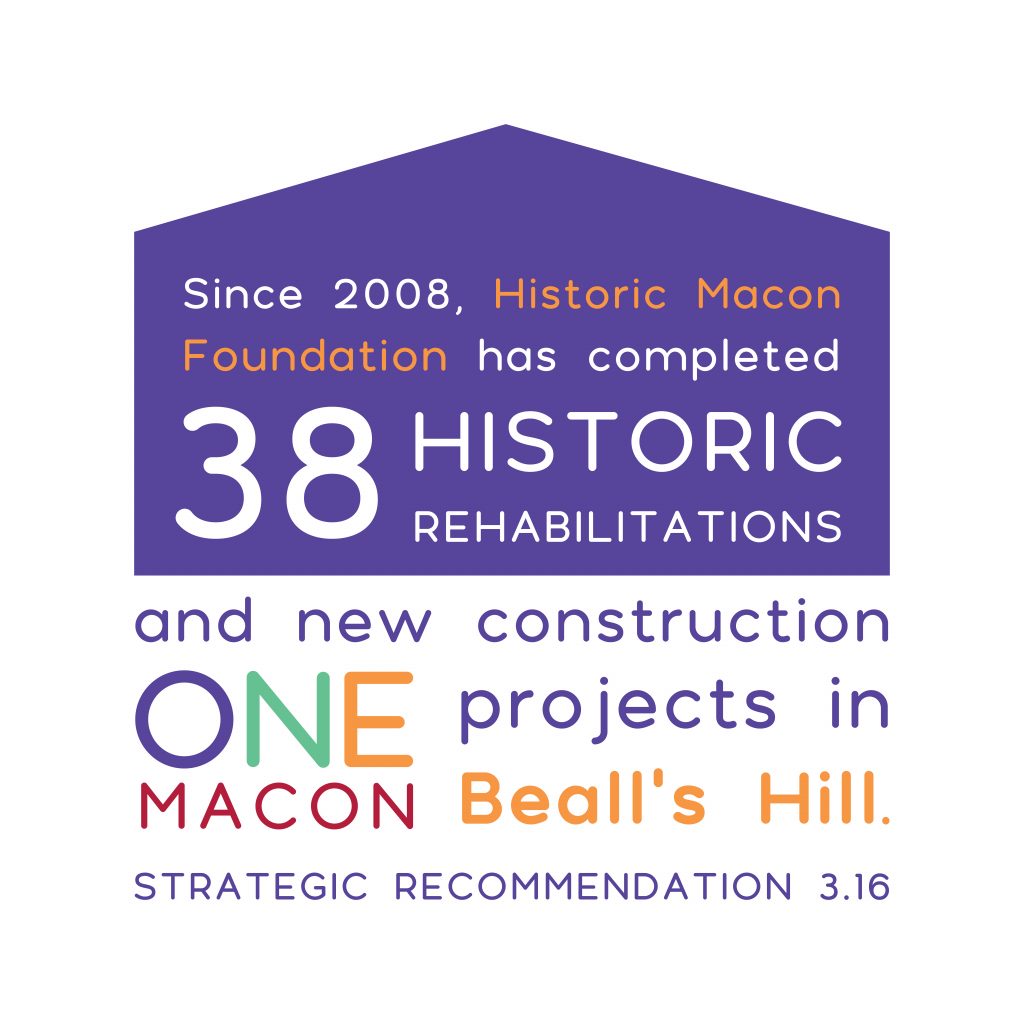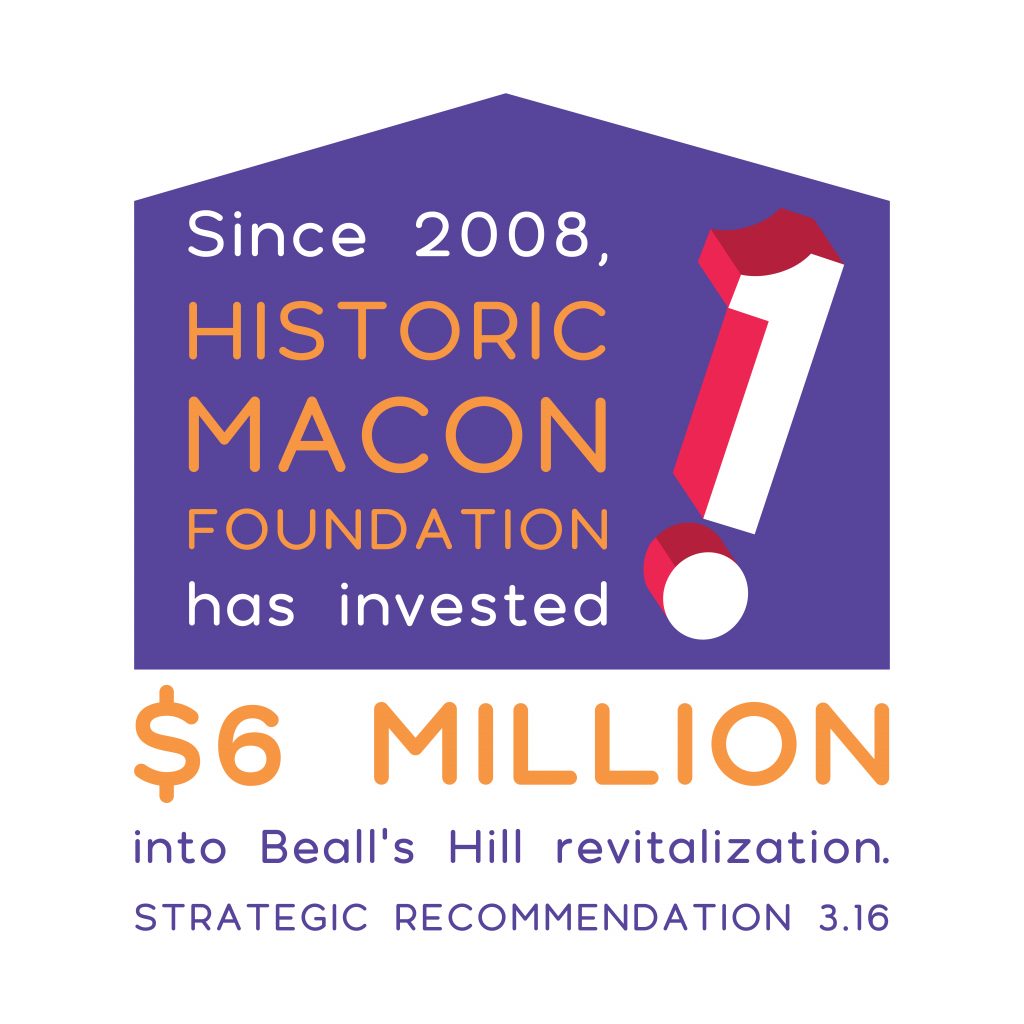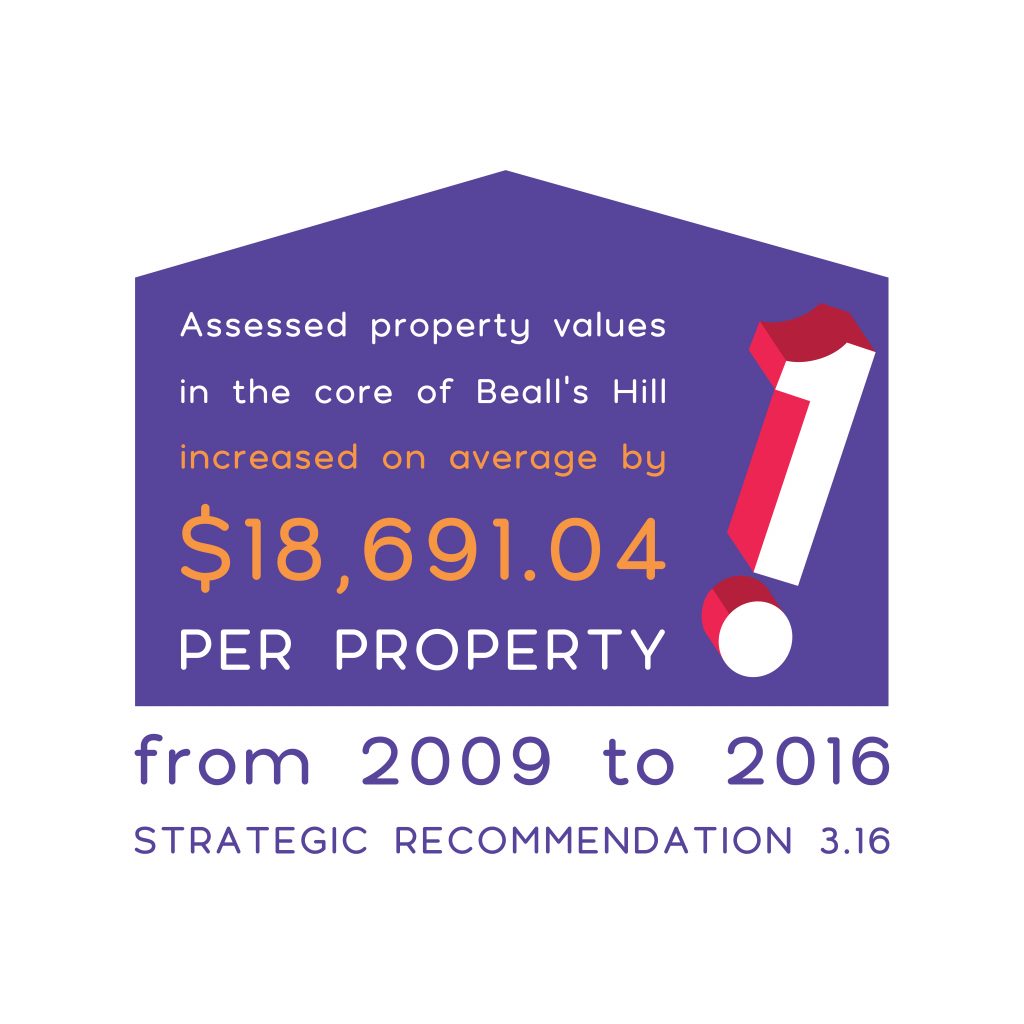Guest Blog Post by Lauren E. Mauldin, Historic Macon Loan Fund Manager
Since 2008, Historic Macon has focused our revitalization efforts in Beall’s Hill. To date, we’ve completed over 38 historic rehabilitations and new construction projects in Beall’s Hill, and invested nearly $6 million into the neighborhood. After executing our approach to neighborhood revitalization – one neighborhood at a time, street by street, block by block, and house by house – for over 30 years, we at Historic Macon Foundation recognized our revitalization work in Beall’s Hill made a significant economic impact in the community.
However, we recognized that Historic Macon didn’t have the expertise to convert the tangible development of historic rehabs and new construction into quantitative statistics that effectively expressed that impact. Thus, we sought to quantify our work in Beall’s Hill and how it affected the local economy. To find the expertise we were lacking, we hired Aaron Scherf as the Property Development Analyst Intern. As a senior Mercer University student, this project fit perfectly into Aaron’s economic and statistical expertise, and even tied into an econometric class project.
Throughout the fall semester, Aaron gathered a variety of data related to demographics, sales, and property values within Beall’s Hill. Because of the availability data, Aaron analyzed the change of property values since 2009. The following statistics were taken from Aaron’s report, “Preservation through Revitalization: Economic Impact of the Historic Macon Foundation on the Neighborhood of Beall’s Hill.”
- All Properties: From 2009 to 2016, assessed property values in the core of Beall’s Hill increased on average by $18,691.04 per property (1).
- Historic Macon Properties: Historic Macon owned properties increased in value during that same time by $81,273.22 on average (2).
- All Residential and Historic: The average change in value for just residential and historic properties was $18,908.29 (excluding outliers). (3)
- Adjacent Residential and Historic: Those residential properties adjacent to HMF’s parcels (bordering or across the street, does not include any HMF properties) increased on average by $20,409.09, demonstrating a spillover effect of HMF’s investments. (4)
- Non-HMF Residential and Historic Properties: Comparing the spillover effect on adjacent residential and historic to the average change in value for non-HMF residential and historic properties shows a change of $8,505.16.
- Non-HMF, Non Adjacent Residential and Historic: Taking out the adjacent parcels from the Non-HMF Residential and Historic numbers and the average change in values goes down further, to $4,537.18. (5)
- Non-HMF: If you calculate the isolated change in value for properties in the CBG with Historic Macon’s properties removed, the average increase was only $10,952.39 (excluded outliers again). (6)
This analysis shows that Historic Macon’s revitalization work in Beall’s Hill makes a significant impact on the economy.
First, because Historic Macon-owned properties significantly increased in property values, these increased values contributed to an expanded local tax base. This increase in the local tax base then supports city services, education, and infrastructure investments.
Furthermore, these statistics show that the change in property values of adjacent and non-Historic Macon properties is minimal.
Therefore, this analysis supports that long-term Beall’s Hill residents are not affected by the increase in property development led by Historic Macon, which is extremely important to our organization. These initial findings are merely the beginning of a larger in-depth project Aaron will continue in the next few months. Ultimately, these findings support what Historic Macon has known all along: our neighborhood revitalization efforts have a positive economic impact while maintaining a diverse and historic neighborhood.
Pictured are Dalton Turner and Rebecca Barber, the newest Beall’s Hill residents, who purchased their Beall’s Hill home in November 2016 and received two bikes from Historic Macon’s “Bikes for Beall’s Hill” initiative funded by The Richard and Julia Moe Family Fund of the National Trust for Historic Preservation, one of the many opportunities offered to new neighbors.




